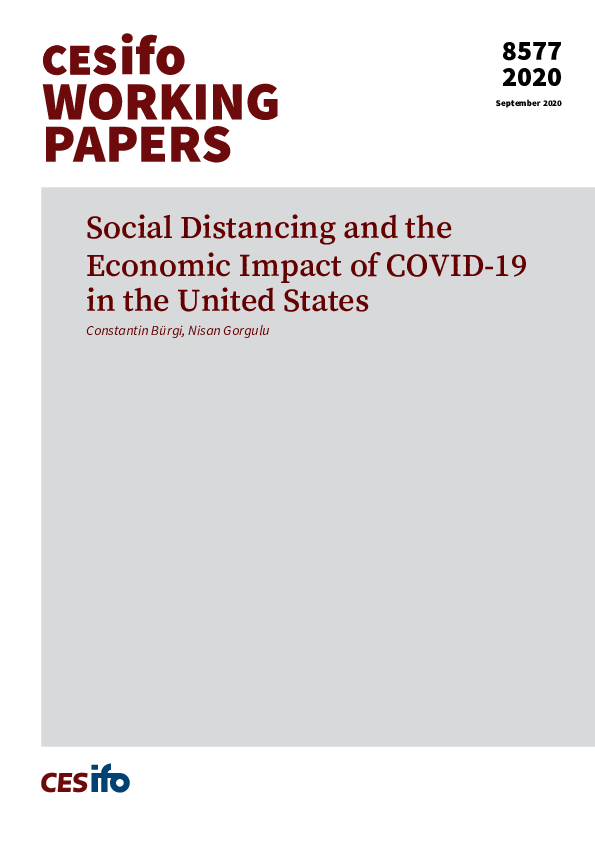Social Distancing and the Economic Impact of Covid-19 in the United States
CESifo, Munich, 2020
CESifo Working Paper No. 8577

This study documents how the demographics of new infections and mortality changed over time across US counties. We find that counties with a larger population share aged above 60 were hit harder initially in terms of both cases and mortality in March and April while counties with a larger population share aged below 20 were hit harder in June and July. At the same time, how counties that voted Democratic in 2016 are affected does not change over time. Subsequently, we simulate an alternative evolution of the pandemic, assuming that states extended the lockdown measures until daily new cases reach the levels of European countries after their lockdown measures were relaxed. In the baseline simulation, we find that cases and deaths would have increased by around 50% less by the end of June, but it would have led to a 2 percentage point larger drop in Q2 GDP.
Fiscal Policy, Macroeconomics and Growth